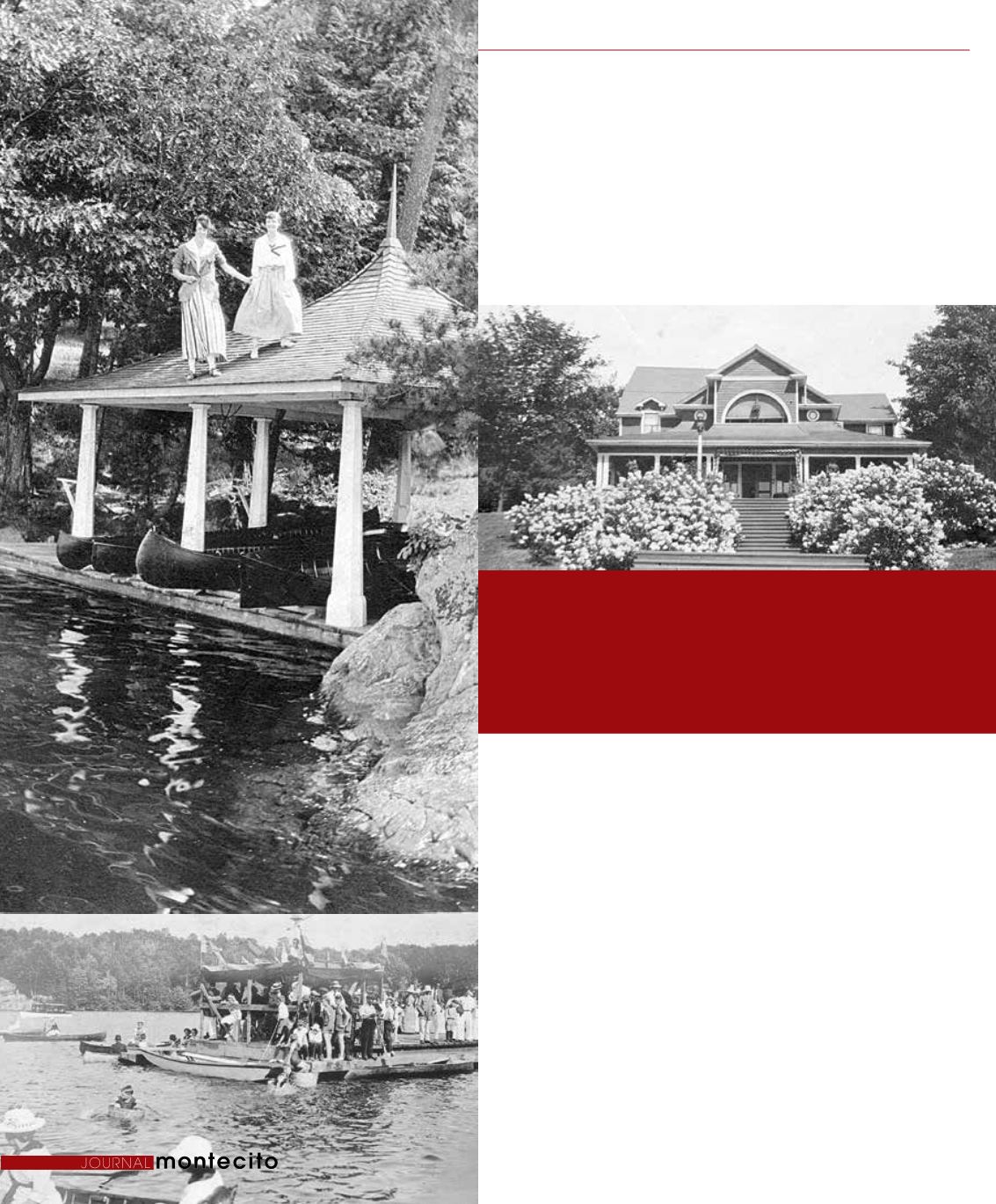
winter
|
spring
63
lollipops, causing the youngsters of the island to name the building
“Uncle Lollipop’s Boathouse.”
Sunday dinners at his mother-in-law’s island, however,
brooked no frivolity. Harriet Wickes Winslow allowed no games or
swimming. At all times, family and friends had to “dress” for meals,
which at the time meant formal gowns and suits, not just putting a
T-shirt over one’s bathing suit. Stiff collars and ties were
not
optional!
Punctuality, a given!
CIVIC INVOLVEMENT
A
generous patron of beautification and improvement projects in
Detroit, Black had jumped into Santa Barbara’s civic life even
before
El Cerrito
was finished. In 1913, he was chairman of the new
Bureau of Architects and a director of the Chamber of Commerce.
Upon his appointment, he announced, “Our committee will take up
the work at once to vigorously advance the interest of Santa Barbara.
Our work will have to show for itself whether we keep our promise.”
With a noted artist for a wife, it is no wonder that Black continued
his patronage of the arts in Santa Barbara. During the summer of
1914, the Blacks entertained Los Angeles artist William Wendt, famous
Impressionist landscape painter and founder of the California Art Club.
MOGULS
&
MANSIONS
(top left) Ruth and friend pose atop the roof of the boathouse
where “Uncle Lollipop” had his daily shave on Black Forest Island on
Lake Joseph, Ontario, Canada; (bottom left) Summer fun on Lake
Joseph, one of three lakes connected by locks in the Muskoka Lakes
region; (right) Clarence Black’s home on Black Forest Island


